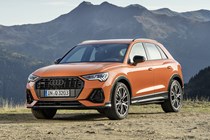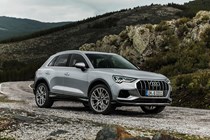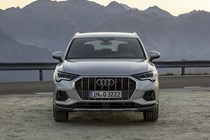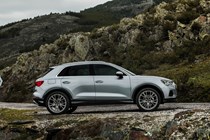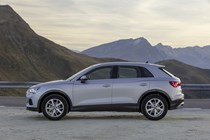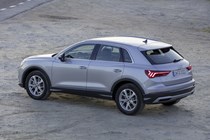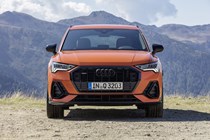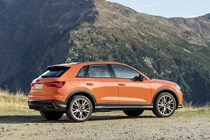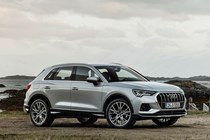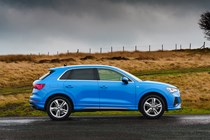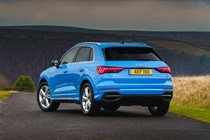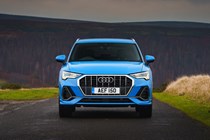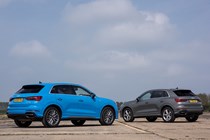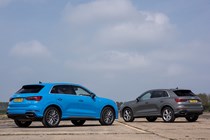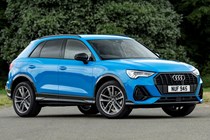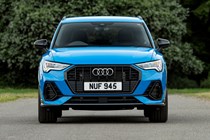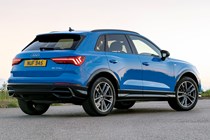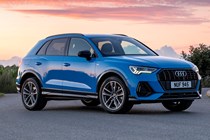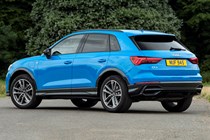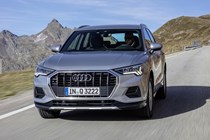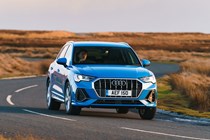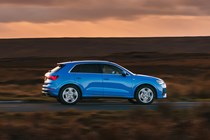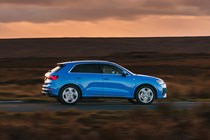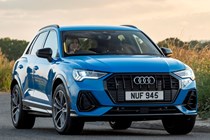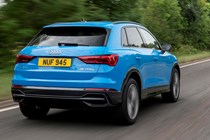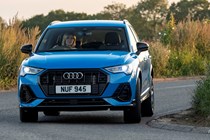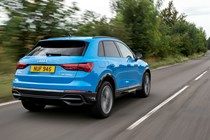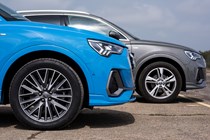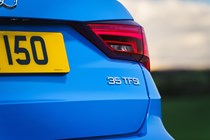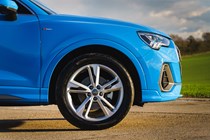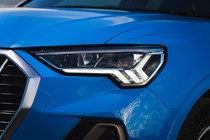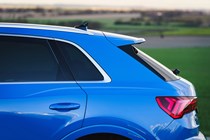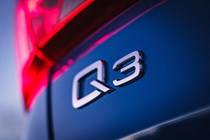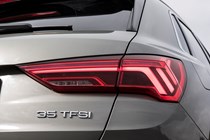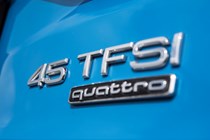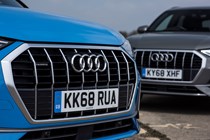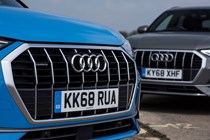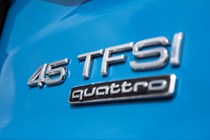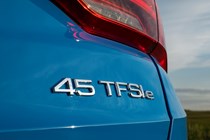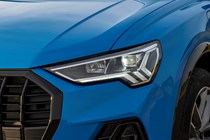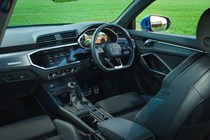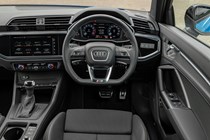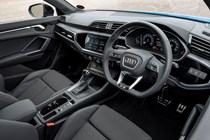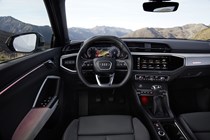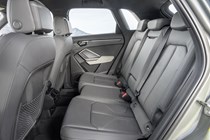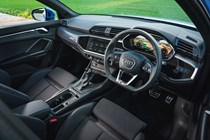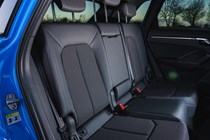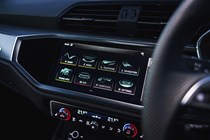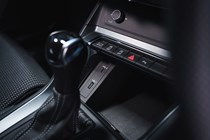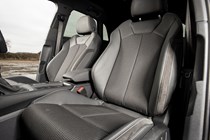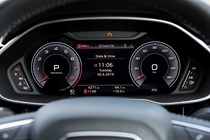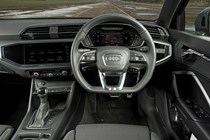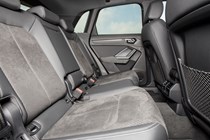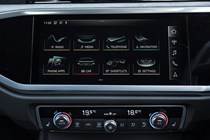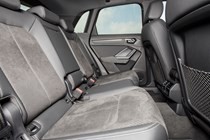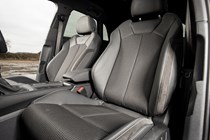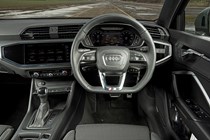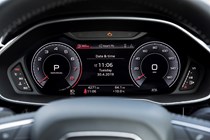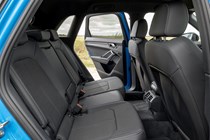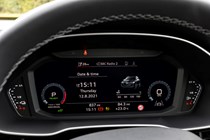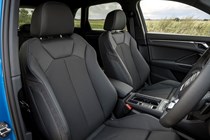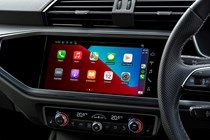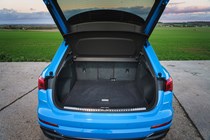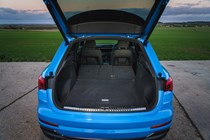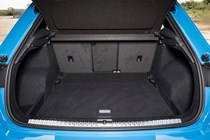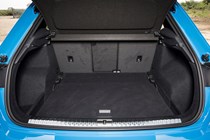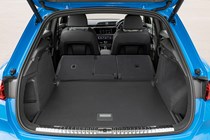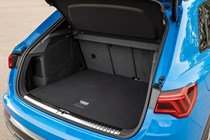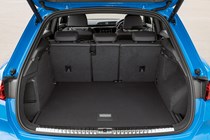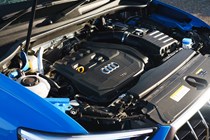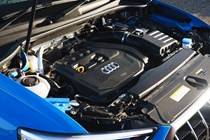Audi Q3 running costs and reliability
Miles per pound (mpp) ⓘ
| Petrol engines | 4.1 - 6.6 mpp |
|---|---|
| Diesel engines | 4.8 - 7.2 mpp |
| Plug-in hybrid petrol engines * | 5.7 - 5.8 mpp |
Fuel economy ⓘ
| Petrol engines | 28 - 44.8 mpg |
|---|---|
| Diesel engines | 37.7 - 56.5 mpg |
| Plug-in hybrid petrol engines * | 38.7 - 39.8 mpg |
- Audi Q3 shouldn’t cost the earth to run
- Diesel engines should be more consistently economical than petrol
- Plug-in hybrid has reasonable EV range and good real-world economy
What are the running costs?
Thanks to a selection of excellent VW Group engines, the Q3 is unusually economical in real-world driving. Taking the freakishly good official ‘real-world’ WLTP fuel consumption figures out of the equation, the entry-level 2.0-litre diesel is the most economical on a long run, with the PHEV taking the prize if you keep it plugged in and stick to shorter journeys. The 35 TDI is good for 60mpg in day-to-day driving, the PHEV is a more mixed bag – 45mpg with the battery drained and 100+mpg with it topped up.
The entry-level 1.5-litre petrol should be fairly cheap to fuel provided you don’t work the engine too hard. Your best chance of beating 50mpg is on a long motorway cruise or light-throttle A-road driving, but the potential is there. The CO2 output isn’t as low as the entry-level diesel either, but it’s still highly competitive. Overall, the 1.5 TSI 150hp engine is a petrol unit to have (some rough-running issues when cold aside), but the 2.0-litre isn’t that far behind.
Servicing and warranty
A pretty standard offering from Audi when it comes to warranty these days – a three-year/60,000 miles warranty as standard really doesn’t cut it these days, and is a case of the company resting on its laurels. There are separate three year paint and 12-year body warranties too, and you can extend the standard deal, but it’s not a package that’s going to have any number of rivals quaking in their boots.
Given that the likes of Kia and MG offer a seven year warranty, and Hyundai makes it five, Audi is going to have to up its game as the world starts to move towards electrification and the traditional brand pecking order starts to come undone.
Reliability
- Middling reliability for Audi
- Q3 scores better than larger models
- No new recalls listed
The Audi Q3 shares the same platform and majority of its components with the Audi A3, which has experienced three recalls to date. The previous Q3 was subjected to two recalls throughout its lifetime, which is quite low and, at the time of writing, this model has no outstanding recalls.
However, this is no measure of overall reliability, and it has to be said that Audi has (again) been resting on its laurels for years in this department, with some very poor scores. However, Audi’s electrical gremlins appear to affect its larger models, with the Q3 proving to be reasonably reliable in service, with the only major question mark being some running issues on early 1.5-litre petrol cars.
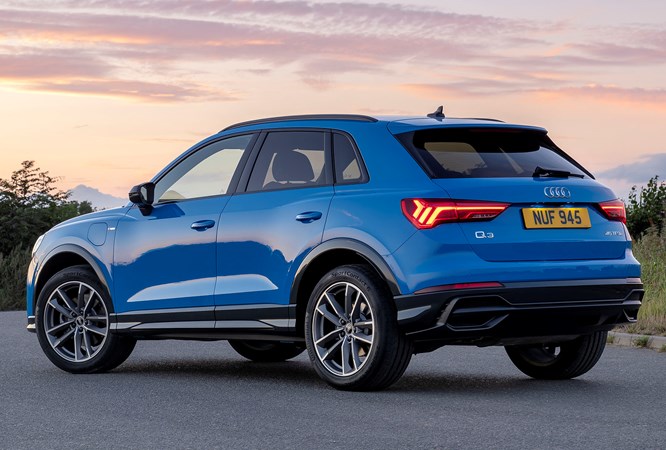
Ongoing running costs
| Road tax | £180 - £600 |
|---|---|
| Insurance group | 23 - 42 |
Get an insurance quote with

|
|



